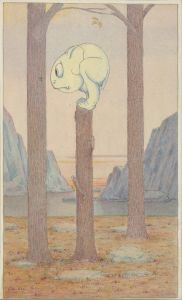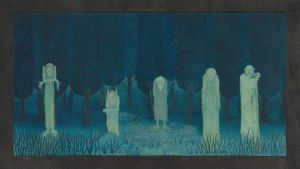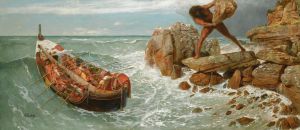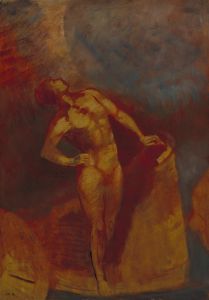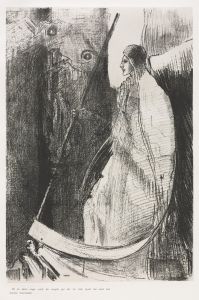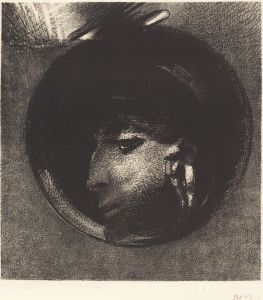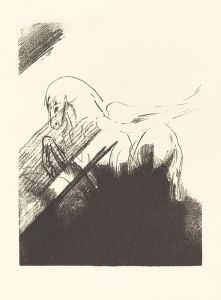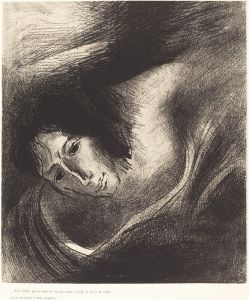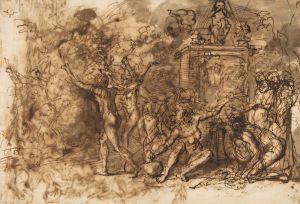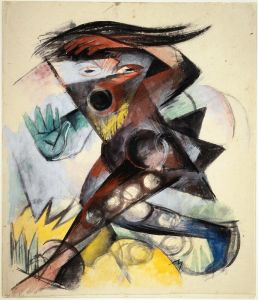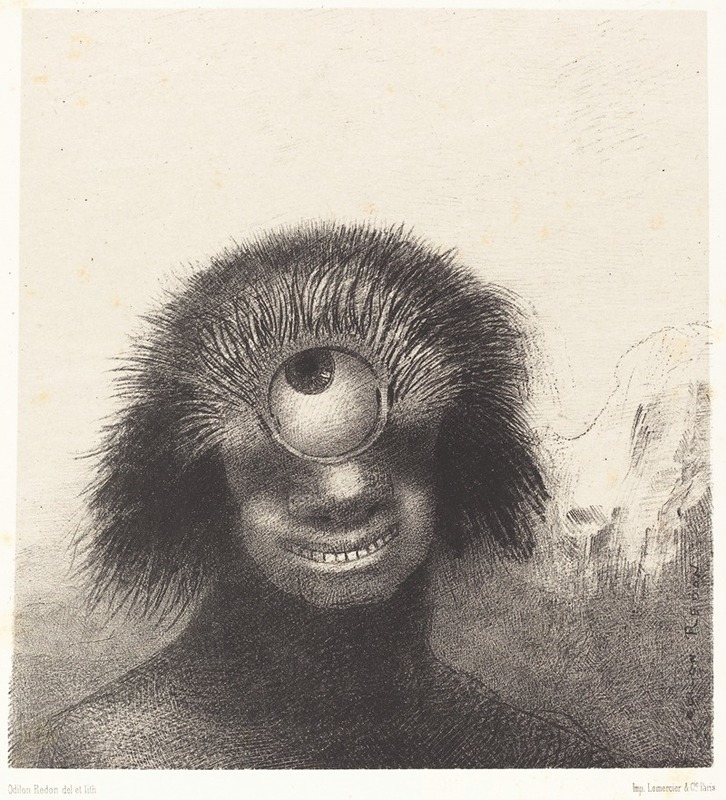
Le Polype difforme flottait sur les rivages, sorte de cyclope souriant et hideux
A hand-painted replica of Odilon Redon’s masterpiece Le Polype difforme flottait sur les rivages, sorte de cyclope souriant et hideux, meticulously crafted by professional artists to capture the true essence of the original. Each piece is created with museum-quality canvas and rare mineral pigments, carefully painted by experienced artists with delicate brushstrokes and rich, layered colors to perfectly recreate the texture of the original artwork. Unlike machine-printed reproductions, this hand-painted version brings the painting to life, infused with the artist’s emotions and skill in every stroke. Whether for personal collection or home decoration, it instantly elevates the artistic atmosphere of any space.
Odilon Redon was a French symbolist painter, printmaker, draughtsman, and pastellist, known for his unique and imaginative works that often explored themes of fantasy and the subconscious. One of his notable works is "Le Polype difforme flottait sur les rivages, sorte de cyclope souriant et hideux," which translates to "The Deformed Polyp Floated on the Shores, a Sort of Smiling and Hideous Cyclops." This piece is part of Redon's series of works that delve into the world of dreams and the grotesque, reflecting his interest in the mysterious and the otherworldly.
Redon was born in Bordeaux, France, in 1840 and showed an early interest in art. He studied under Jean-Léon Gérôme and later with Rodolphe Bresdin, who introduced him to etching and lithography. Redon's early works were primarily charcoal drawings and lithographs, often referred to as his "noirs," which were characterized by their dark, monochromatic tones and fantastical subjects. These works laid the foundation for his later, more colorful pastels and paintings.
"Le Polype difforme flottait sur les rivages" is emblematic of Redon's fascination with the bizarre and the surreal. The image of a cyclopean creature, both smiling and hideous, floating on the shores, captures the duality often present in Redon's work—the interplay between beauty and horror, the real and the imagined. This duality is a hallmark of the Symbolist movement, of which Redon was a key figure. Symbolism sought to express the ineffable, the emotions and ideas that lie beyond the reach of literal representation.
Redon's work was influenced by a variety of sources, including literature, science, and his own introspective nature. He was particularly inspired by the writings of Edgar Allan Poe, Charles Baudelaire, and Stéphane Mallarmé, whose themes of melancholy, dreams, and the macabre resonated with his artistic vision. Additionally, the scientific discoveries of his time, particularly in the fields of biology and microscopy, informed his depictions of strange and otherworldly creatures.
Throughout his career, Redon's work evolved from the dark and monochromatic to the vibrant and colorful. In the 1890s, he began to incorporate pastels and oils into his repertoire, creating luminous and dreamlike compositions. Despite this shift in medium and palette, the underlying themes of mystery and the exploration of the subconscious remained constant.
Redon's art was not widely recognized during his early career, but he gained greater appreciation in the late 19th and early 20th centuries. His work was exhibited alongside that of the Nabis and other avant-garde artists, and he became an influential figure for later movements such as Surrealism. Today, Redon is celebrated for his ability to evoke the unseen and the uncanny, and his works continue to captivate audiences with their enigmatic beauty.
"Le Polype difforme flottait sur les rivages" remains a testament to Redon's unique vision and his ability to transcend the ordinary, inviting viewers into a world where the boundaries between reality and imagination blur.





